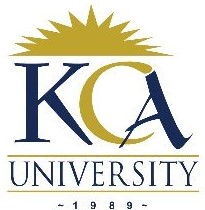 UNIVERSITY EXAMINATIONS: 2016/2017
UNIVERSITY EXAMINATIONS: 2016/2017
EXAMINATION FOR THE DEGREE OF BACHELOR OF SCIENCE IN
INFORMATION TECHNOLOGY/BACHELOR OF SCIENCE IN
INFORMATION AND COMMUNICATIONS TECHNOLOGY
BIT4302 BCT3201 TELECOMMUNICATIONS
FULL TIME/PART TIME/DISTANCE LEARNING
DATE: AUGUST, 2017 TIME: 2 HOURS
INSTRUCTIONS: Answer Question One & ANY OTHER TWO questions.
QUESTION ONE [30 MARKS]
a) Discuss why an organization would want to run a converged network for voice.
6 Marks
b) Describe briefly the six major transmission functions that are required in long range
communications. 6 Marks
c) With the aid of a diagram, discuss the concept of data rate shifting as it applies to IEEE
802.11b clients. 6 Marks
d) Discuss the UNII-1, UNII-2 and UNII-3 in relation to IEEE 802.11a wireless LAN
communication highlighting the frequency bands for each, the number of channels and key
characteristics. 6 Marks
e) In relation to the GSM technology, discuss the functions of the following components:
(i) Base Station Subsystem (BSS) 1 Mark
(ii) Network Subsystem (NSS) 1 Mark
f) Describe the characteristics of a traditional data network 4 Marks
QUESTION TWO [20 MARKS]
a) Explain the following terminologies as used in the TCP three-way handshake:
(i) Positive acknowledgment and retransmission (PAR) 2 Marks
(ii) Windowing. 2 Marks
(iii) Sequencing 2 Marks
b) Describe briefly any five components of a VoIP network. 5 Marks
c) Explain briefly three features of
(i) circuit switching. 3 Marks
(ii) Packet switching 3 Marks
d) Define sampling, quantization and encoding. 3 Marks
QUESTION THREE [20 MARKS]
a) IEEE 802.11 is the standard that specifies connectivity for wireless networks. IEEE
802.11, or Wi-Fi, refers to a collective group of standards. These protocols specify the
frequencies, speeds, and other capabilities of the different Wi-Fi standards. In this regard,
describe the following standards:
(i) IEEE 802.11a 2 Marks
(ii) IEEE 802.11b 2 Marks
(iii) IEEE 802.11g 2 Marks
(iv) IEEE 802.11h 2 Marks 2 Marksb) Compare and contrast voice transport in circuit-switched and VoIP networks. 8 Marks
c) Discuss briefly the importance of error detection and correction, flow control and
recovery in data communications. 6 Marks
d) (i) What can the categorization of communication satellites be based on?
3 Marks
(ii) What can the categorization of satellite orbits be based on? 3 Marks 3 Marks
QUESTION FOUR [20 MARKS]
a) Given the bit stream below, encode it using:
(i) Bipolar-AMI 2 Marks
(ii) Manchester 2 Marks
(iii) Differential Manchester 2Marks
(iv) Frequency Shift Keying (FSK) 2 Marks
(v) Non-Return to Zero Inverted 2 Marks
0 0 1 1 1 0 1 0 1 1
b) Standards are essential for services requiring worldwide interoperability. During the
migration of TV stations from analog to digital, some media houses threatened to go to
ITU to have their issues addressed. ITU is divided into three sectors. State them and
explain the functions of each sector. 6 Marks
c) Explain briefly four techniques that can be used to increase capacity in mobile networks.
4 Marks
QUESTION FIVE [20 MARKS]
a) Telecommunications systems use transmission media of various types. Explain why, with
any communications medium, the received signal will differ from the transmitted signal.
3 Marks
b) Assume a communications channel with an intended capacity of 40Mbps. The bandwidth
of the channel is 2MHz. Determine the signal-to-noise ratio required in order to achieve the
specified capacity. 4 Marks
c) Give your understanding of FDMA, TDMA and CDMA multiple access techniques used
in wireless communications and explain two principal weaknesses of FDMA and TDMA.
8 Marks
d) With the aid of appropriate examples, briefly explain why telecommunications is critical
to the operations of modern business. 5 Marks
